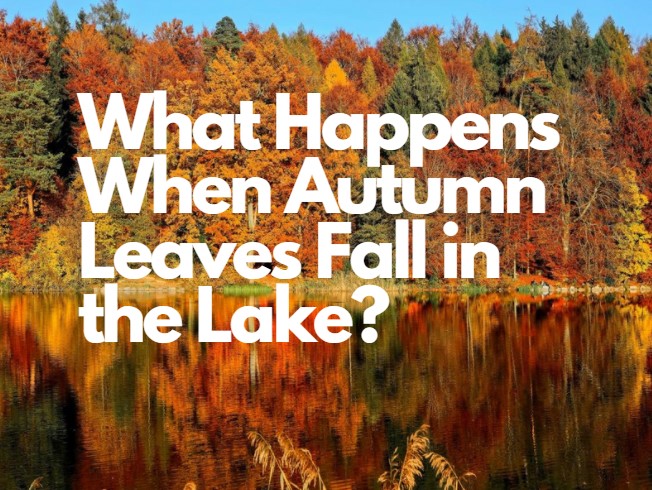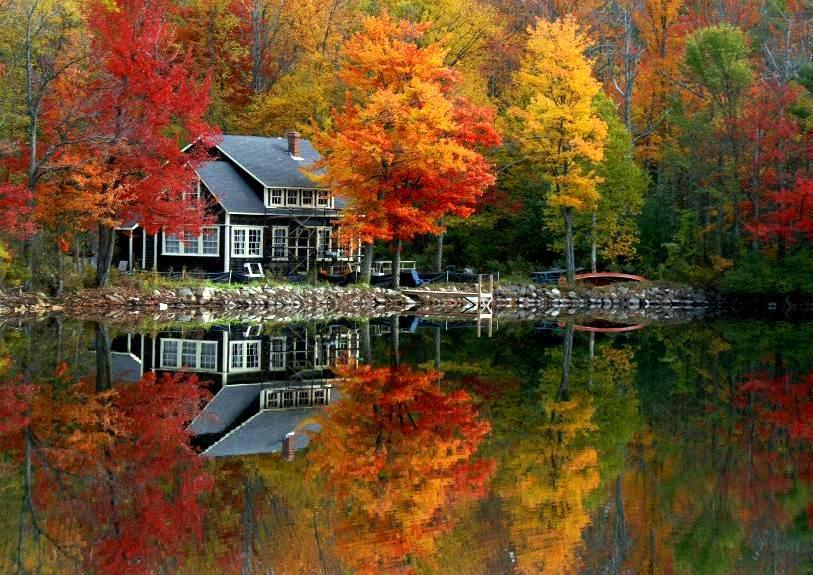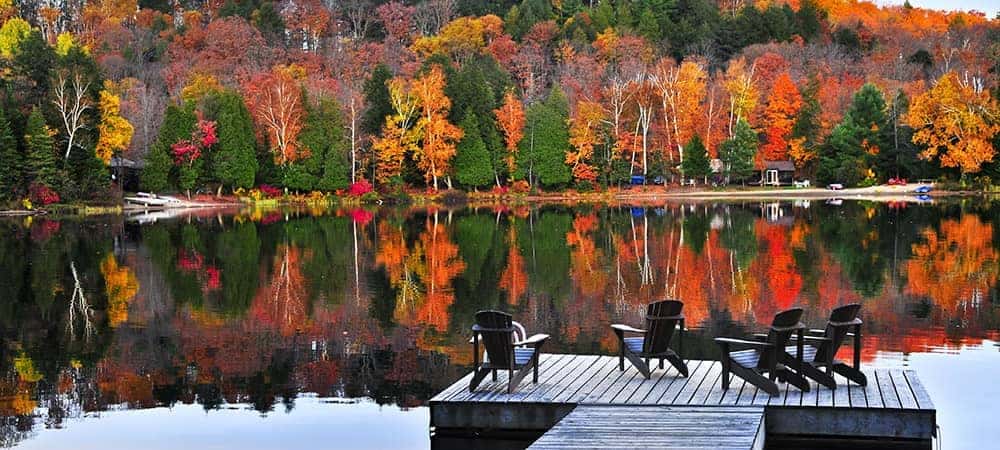
While falling leaves blanket the ground during autumn with shades of maroon and gold, they are also polluting lakes and rivers.
When leaves fall to the ground, they decompose and replenish the soil with nutrients and organic matter. What happens to leaves when there is no soil to land on?
When there is no soil to land on- such as on a street or sidewalk⎯ the leaves and all their decomposing bits wash down the street and into the storm drain. The runoff from storm drains unfortunately ends back in lakes or rivers. Not only is it an “ick” factor to have the lake covered in leaves, but the leaves contain phosphorus which is the fuel for algae. This algae is a problem because when it dies it decomposes at the bottom of the lake and uses oxygen that fish and aquatic plants need to survive.

A very significant number of lakes in the United States do not reach water standard quality measures because of excess nutrients. Leaves are a major part of this problem. According to a study conducted by the University of Minnesota, researchers found leaves account for about 60 percent of damage from too many nutrients in urban lakes.
Don’t “leaf” it up to someone else to solve this problem! Here’s what you can do to keep your lakes and rivers clean:
Rake the leaves around your house, sidewalk, and street:
Make sure to rake the leaves around your neighborhood several times throughout the fall. Although many cities and towns have street sweepers, they usually arrive in the late fall when it is already too late. Grab some of your neighbors or friends and clean up the community to keep the water quality safe for everyone! Just be sure to never sweep your leaves directly onto the street even if you know a street sweeper is coming.

Never trash or burn your leaves:
Putting your leaves into regular trash bags is illegal. Burning leaves releases large amounts of pollution. This pollution can cause breathing problems for some and causes long-term health effects for everyone.
Put the leaves in a compost bin:
One of the best ways to use leaves (from the street or the yard) is to compost them in your backyard. Another option is to drop off your leaves and sticks at a compost site near you. Depending on where you live, these may be called “yard waste” or “brush” drop sites. Contact your city or county for drop-off site locations, items accepted, and any fees involved.
Use the leaves as mulch for your garden:
Leaves make fantastic mulch for your lawn and garden! Use the mower to shred those leaves and leave them on the lawn to decompose and put that phosphorus back into the soil where it belongs. Add shredded or whole leaves right to your garden beds to suppress weeds, provide insulation, and nourish tired soil. It’s free and your trees and veggies will thank you.

Curbside pick-up:
Some garbage hauler companies will pick up yard waste and bring them to a compost site- but it can sometimes be an additional fee! Be aware that many towns and cities require residents to bag their leaves in compostable bags.
Have fun and play in your leaf pile:
Have some good old-fashioned fun and feel like a kid again by jumping in leaf piles before you bag them! Grab your family and friends and spend some time enjoying the beautiful autumn weather.
If some leaves do happen to end up in lakes or rivers be sure not to rake them. This can do more harm than good because it can disrupt plants and fish living on the bottom. Raking in the lake also suspends sediment and phosphorus into the water column, causing violations of state water quality standards and fueling algae blooms.
Be sure to do your part in keeping our lakes and rivers clean!
Posted by Scott Freerksen “The Lake Guy”
